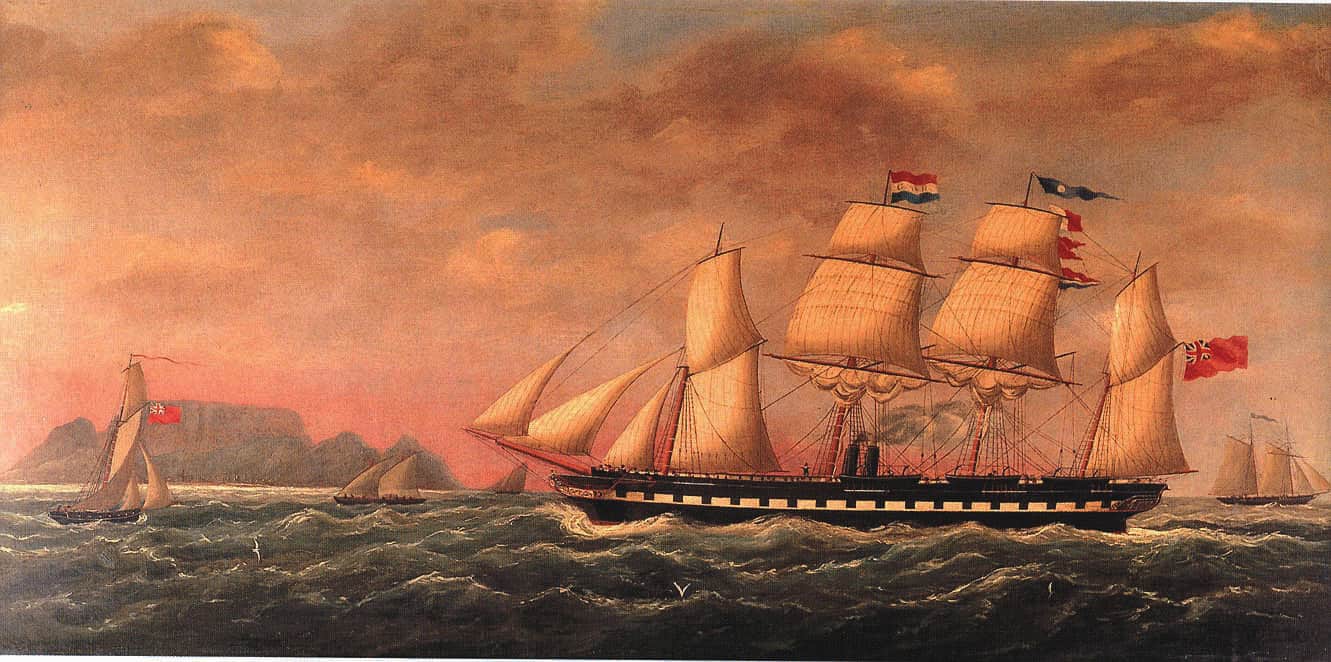- In this painting, the SS Great Britain is passing Cape Town, South Africa, on its way to Australia. The famous Table Mountain is visible in the background.
- The ship is using sail and steam power. If you look closely you can see the coal smoke coming from the ship’s two funnels. Coal was burned to heat water boilers, creating enough steam to power the ship’s engine and turn her screw propeller.
- The SS Great Britain often carried more than 600 passengers and crew between Liverpool and Melbourne, Australia. The ship made this journey 32 times between 1852 and 1875.
- Each journey lasted around 60 days, with the ship often battling rough seas and storms on the way.
- The SS Great Britain only ever stopped once on this route when it made an unexpected stop in Cape Town, South Africa, in 1852. This painting shows the ship making its way into Cape Town Harbour. After 1852, the ship never stopped on the routes to and from Australia.
The Story
Transformation into an Emigrant Steam Clipper Ship
In 1852, the SS Great Britain was converted to a steam clipper ship to travel to and from Australia. Square sails were used on the ship so it could travel more efficiently in the different wind conditions present in the Atlantic and Pacific Oceans. The ship’s steam engine and steam-driven propeller worked alongside the sails but were mainly used if it was not windy enough or if the wind was blowing in the wrong direction. By using sail power efficiently, the ship’s owners could save money on fuel.
As more people wanted to travel to and from Australia, cheaper ‘Steerage’ accommodation was created. An extra deck was added in 1857 to allow space to carry up to 700 passengers.
It was a difficult and often dangerous journey through rough seas. However, the ship’s efficient combination of steam and sail power, and strong iron hull, meant this journey could be made safely in only 60 days; the fastest way to make this journey at the time.
An Unexpected Stop
During its first voyage to Australia in 1852, the SS Great Britain stopped in Cape Town, South Africa, to get more coal supplies. In this painting, you can see South Africa’s famous Table Mountain in the distance. When the ship reached the Harbour, many passengers went ashore to climb the mountain!
With careful use of the coal supply, the SS Great Britain could carry enough coal to get all the way to Australia without stopping. On the first voyage, the coal stores appear to have been badly managed and were used up faster than expected. After 1852, the ship no longer needed to make stops during voyage until it reached its destination.



